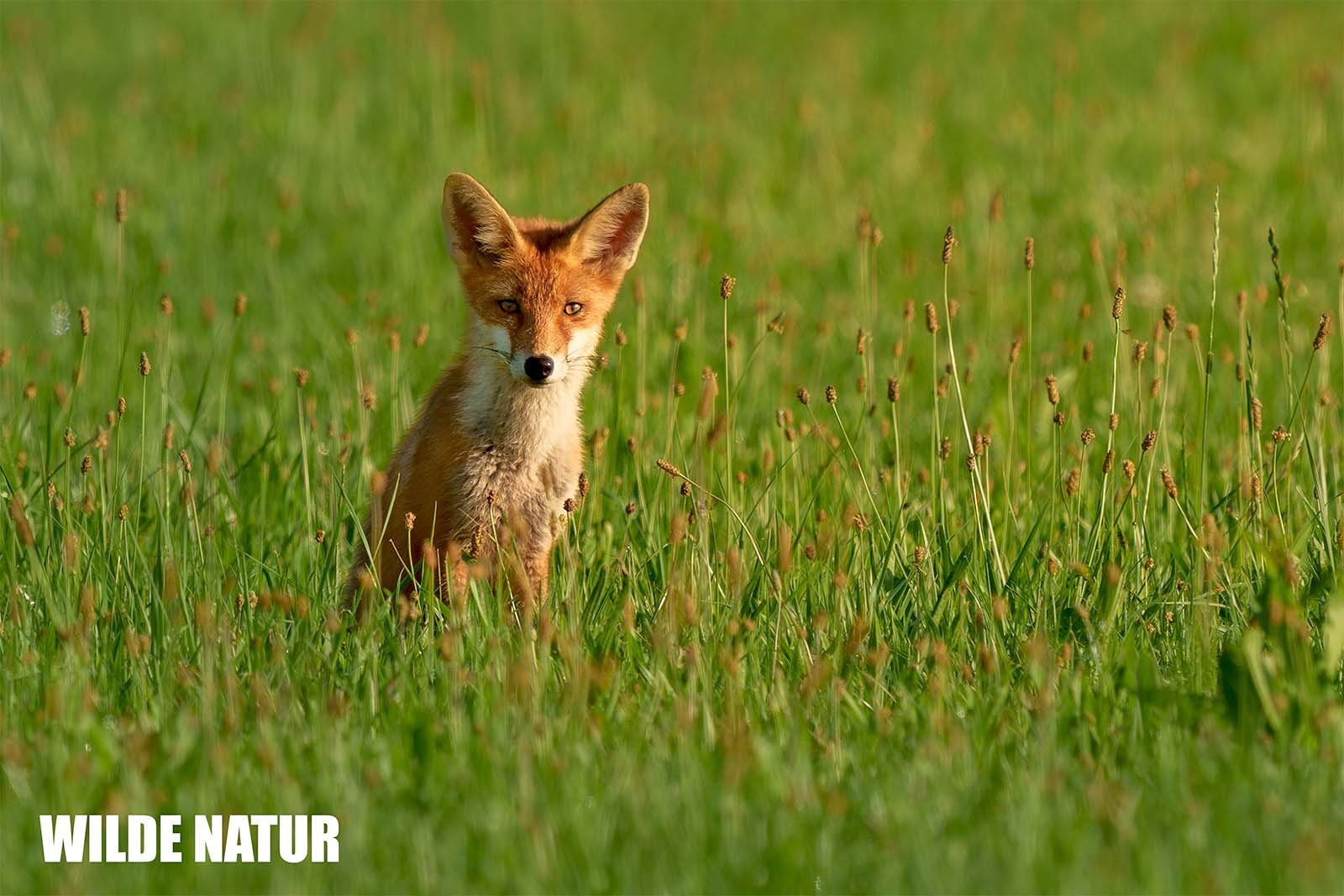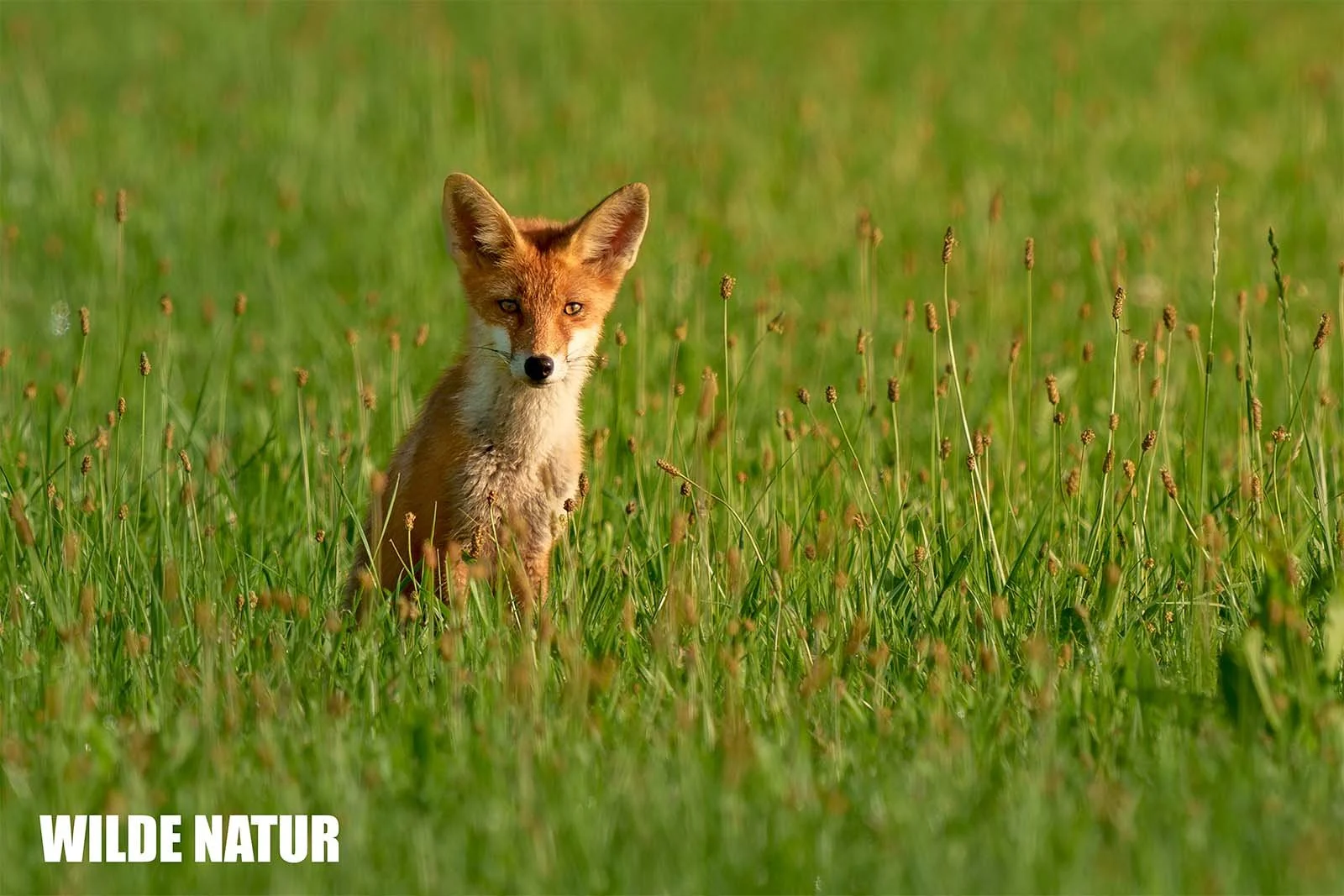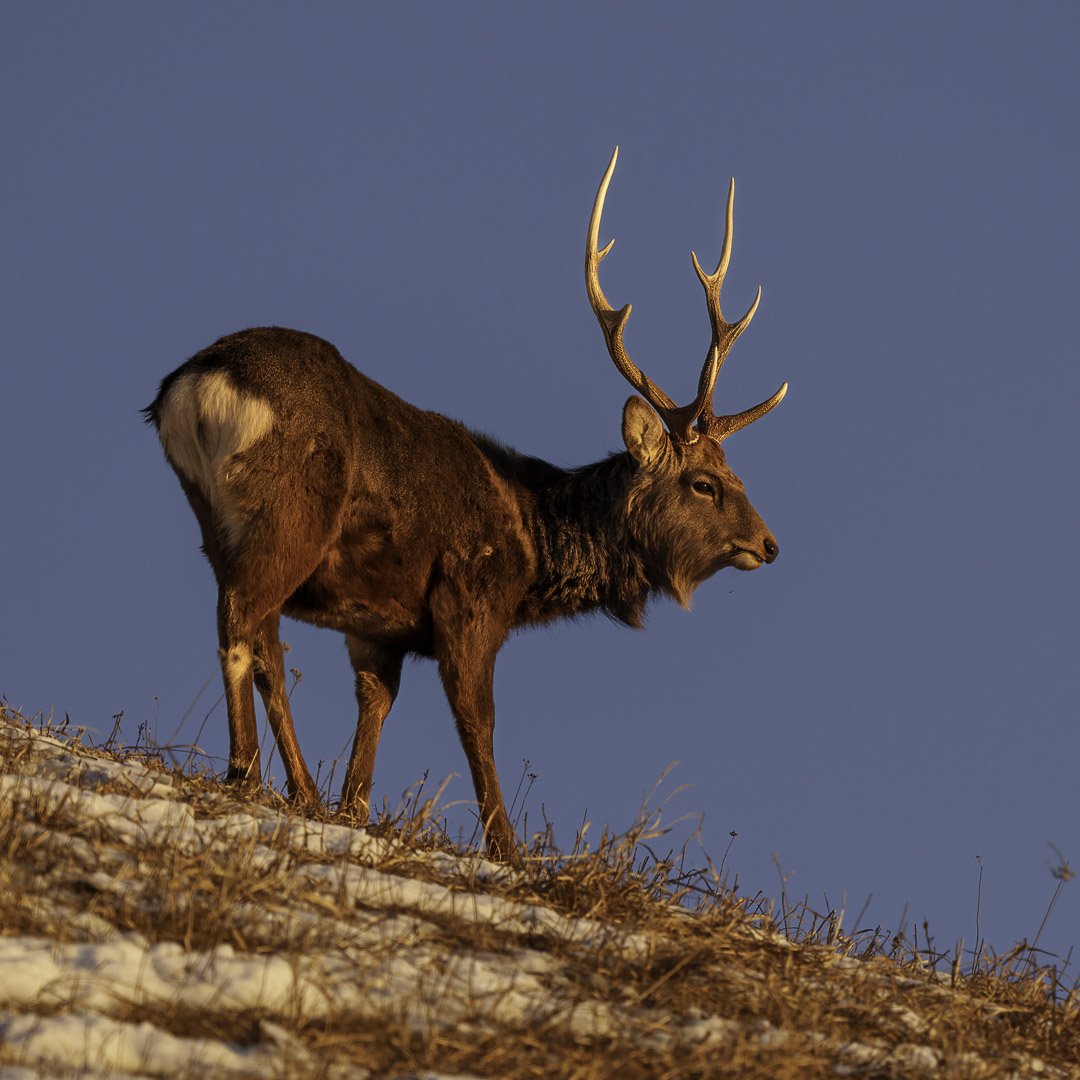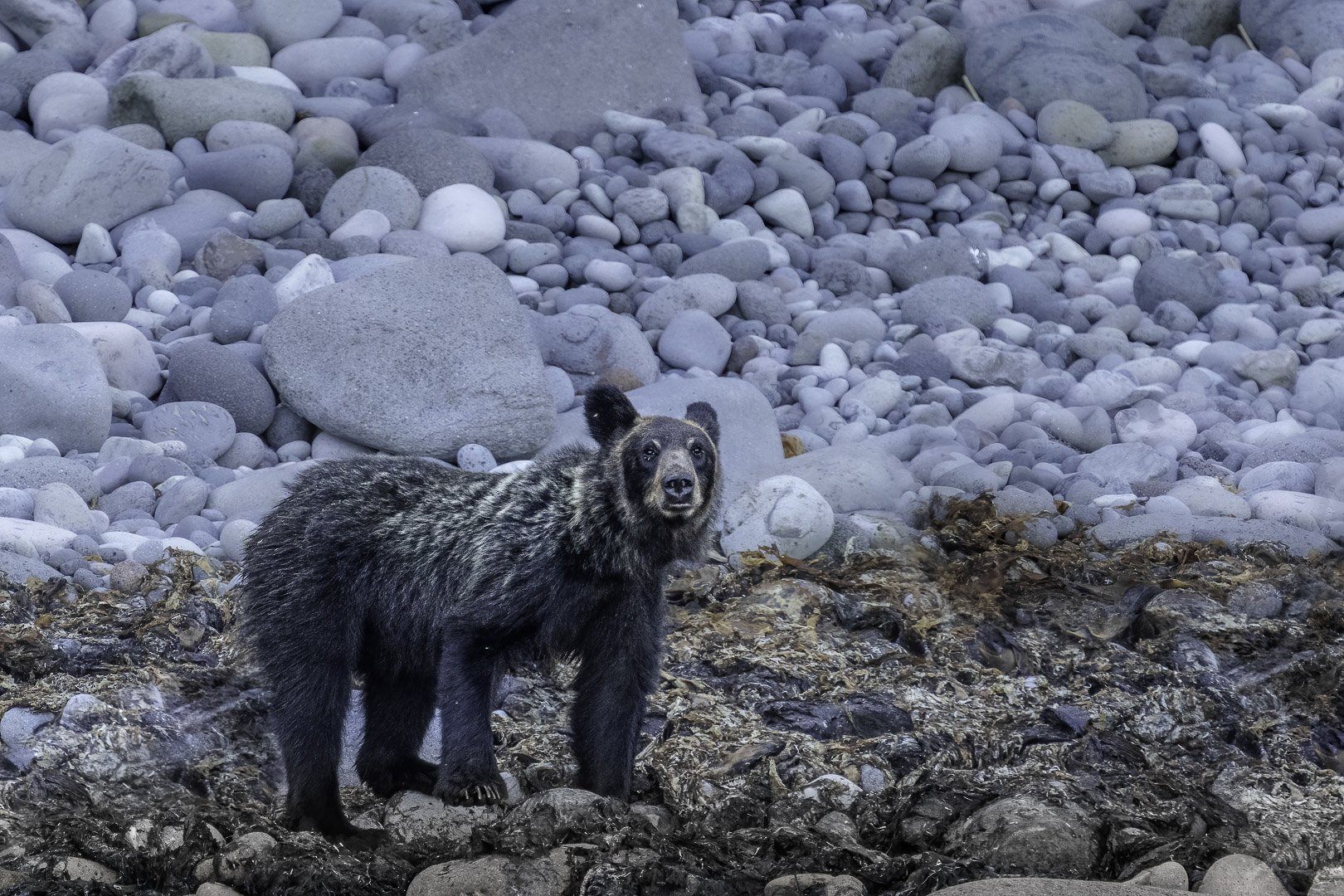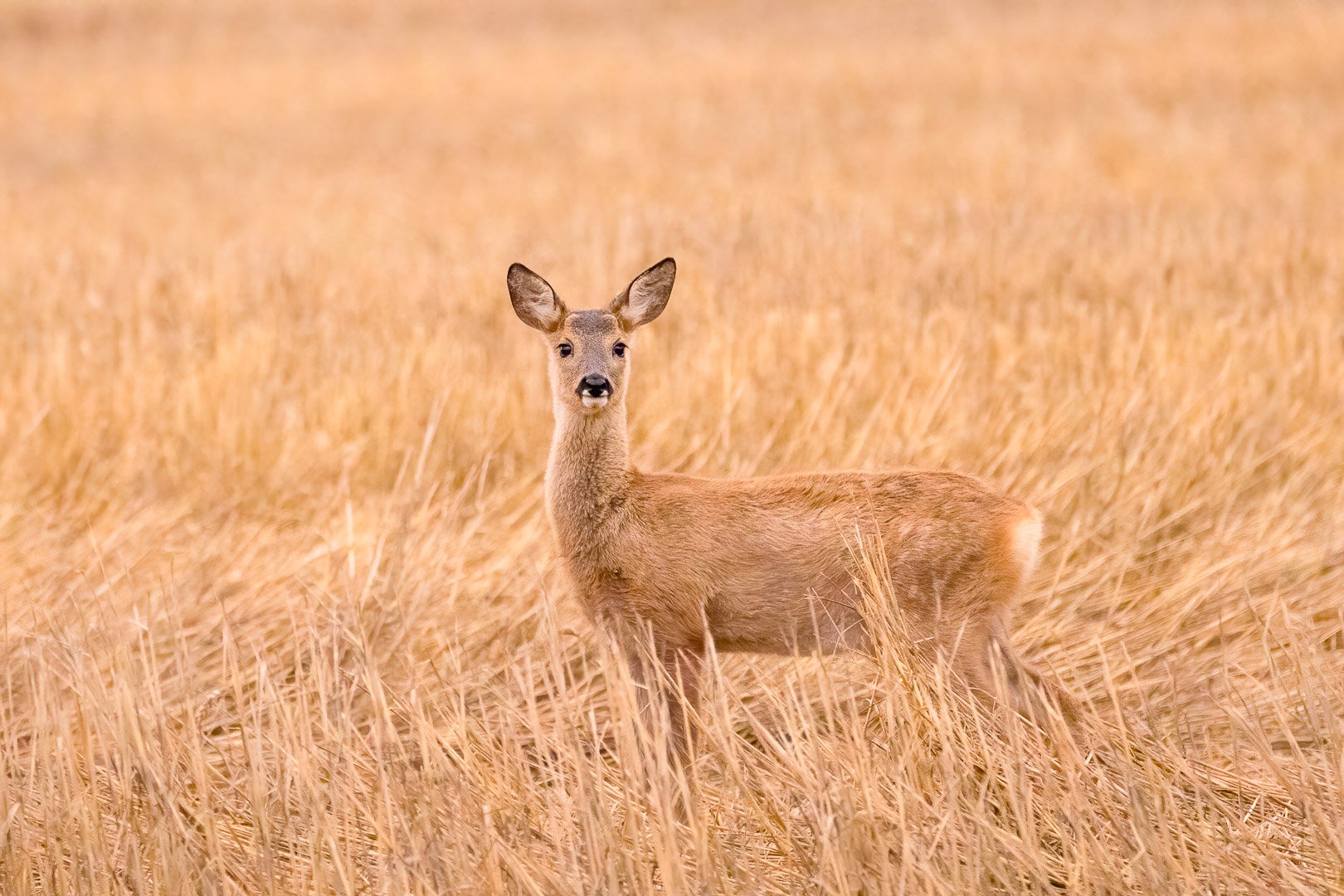Red Fox (Vulpes vulpes)
Red Fox (Vulpes vulpes)
Red Fox – The Cunning Survivalist
It appears silently between houses, darts across fields, and vanishes into the forest—a master of camouflage who can adapt to nearly any environment.
- Skilled and versatile – thrives in both forests and cities
- Reddish fur with a distinctive white-tipped tail
- Flexible diet – from prey to kitchen waste
- Social structure supported by older siblings
- The most widespread wild canid globally
Key Facts
- Scientific name: Vulpes vulpes
- Length: 62–75 cm body, 30–45 cm tail
- Weight: 5–8 kg
- Features: Reddish-brown fur, white tip on tail, dark limbs
- Habitat: Global – from forests to big cities
- Diet: Varied – small mammals, plants, carrion, insects
- Family life: Mating in winter, 4–6 pups per litter
- Hibernation: None – active year-round
Table of Contents
- How to Recognize a Red Fox
- Habitats: From Forests to Backyards
- What Foxes Eat – And How They Remember
- Family Life in the Den
- Winter Behavior: Always on the Move
- Global Spread – With Consequences
- Real-Life Examples: Foxes in Everyday Settings
- Red Fox FAQ
How to Recognize a Red Fox
Its red-brown coat with golden hues gives it away—but most striking is the white-tipped tail, known as the brush.
Typical Features:
- Dark legs and backs of ears
- Light-colored belly
- Dense, lighter winter coat
- Slender body, pointed snout
Elegant, agile, and silent—the red fox is built for stealthy movement through any terrain.
Habitats: From Forests to Backyards
Few wild animals have adapted so successfully to humans. The fox inhabits:
- Forests and farmlands
- Meadows, wastelands, and railway embankments
- Suburbs, gardens, and even inner cities
In metropolises like Berlin, Munich, or London, it is mostly active at night. It roams through:
- Parks and cemeteries
- Rail lines and allotment gardens
- Trash sites and backyards
Quiet, nimble, and nearly invisible, it navigates urban spaces with ease.
What Foxes Eat – And How They Remember
Red foxes are true generalists. Their diet includes:
- Mice, rabbits, and small mammals
- Birds and their eggs
- Insects, earthworms, snails
- Berries, fruit, roots, and fungi
- Carrion, food scraps, kitchen waste
In cities, they forage in open trash bins or compost heaps. Leftovers are stashed in their “pantry”: buried under bushes, in flowerbeds, or between stones.
Clever Trick:
Thanks to their sharp sense of smell, foxes can relocate these caches weeks later—an impressive memory feat.
Family Life in the Den
Mating season begins in winter. The male and female pair up for one season. After about seven and a half weeks of gestation, the vixen gives birth to four to six pups.
The young are born in a protected den—often self-dug or inherited, e.g., from badgers.
Pup Development:
- Week 2: Eyes open
- Week 4: First solid food
- After 3 months: Independent
Older siblings often help out—with playing, feeding, and guarding. The fox displays remarkable social behavior here.
Winter Behavior: Always on the Move
Unlike many wild animals, red foxes don’t hibernate. Even in frost, they remain active—though more energy-efficiently.
Their Strategies:
- Insulating winter coat
- Hiding spots in hedges, woodpiles, or dens
- Adapted foraging—even in snow
Their tracks are unmistakable: a straight line of small prints—no hopping like hares.
Global Spread – With Consequences
The red fox is the most widespread wild dog on Earth. Its range stretches from:
- Europe through Asia to North America
- North Africa to urban areas of Australia
It lives in tundras, steppes, forests, and cities, avoiding only extreme deserts and dense rainforests.
In Australia, as an introduced species, it’s a serious threat: endangering rare ground-nesting birds and native small mammals.
Red Fox in Everyday Life
1. Urban Foxes in Cemeteries
Cemeteries offer quiet and cover—ideal for crepuscular foxes. They’re often spotted here in the early morning.
2. Allotment Gardens as Fox Refuges
Compost piles, berry bushes, and sheds make perfect hideouts—urban gardens are often part of a fox's territory.
3. Mouse Pounce in the Snow
A red fox leaping into the air in winter isn’t playing—it’s hunting: with a precise dive, it plunges headfirst into the snow to catch a mouse.
Red Fox FAQ
Are red foxes dangerous to humans?
No. They avoid humans and remain shy even in cities. Caution is only needed if rabies is suspected.
What to do if a fox lives in your garden?
Watch, but don’t feed. Secure garbage bins and cover compost to avoid offering food.
How old do foxes get?
Rarely older than 3–4 years in the wild; up to 14 years in captivity.
Are foxes solitary?
Yes, outside of the breeding season. During family time, they may form small groups with clear roles.
How can I recognize fox tracks?
Look for straight, almost linear tracks with small paw prints—unlike the hopping pattern of hares.
Final Thoughts
The red fox is no mythical creature—it’s real, alert, and a skilled survivor in our modern world. Whether in cities or the countryside, it reminds us that wilderness begins right outside our door.

